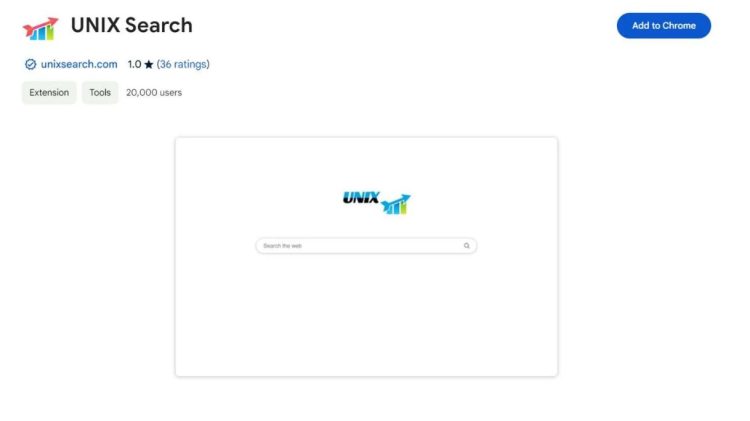A well-known browser hijacker, unixsearch.com, modifies browser settings to force its installation as the default search engine.
Because many search engines give priority to displaying adverts above accurate search results, this cunning strategy presents serious security problems.
As a result, unwary users could unintentionally expose themselves to harmful software or become victims of phishing schemes.
Moreover, the intrusive nature of these search engines extends beyond compromising security. They bombard users with intrusive ads, disrupting the browsing experience.
Furthermore, they collect user data for marketing purposes, further compromising privacy and personal information.
You must keep an eye out and act quickly to get rid of this browser hijacker from your computer.
You may maintain your privacy, secure your online security, and go back to a flawless surfing experience by doing this.
How to Remove Unixsearch.com Browser
1. Disconnect from the Internet:
To stop the Unixsearch.com virus from contacting its command servers and downloading more dangerous components, you must disconnect from the internet.
Cutting the connection reduces the malware’s potential to damage your machine further.
2. Enter Safe Mode:
Safe Mode is a diagnostic mode that lets you troubleshoot and eliminate malware by loading necessary system functions and services.
- Restart your computer and hit the F8 key many times while the boot process is running to enter Safe Mode.
- Press Enter after selecting “Safe Mode” from the boot options menu.
- This makes it easier to uninstall Unixsearch.com by stopping it from starting up with the system.
3. Uninstall Suspicious Programs:
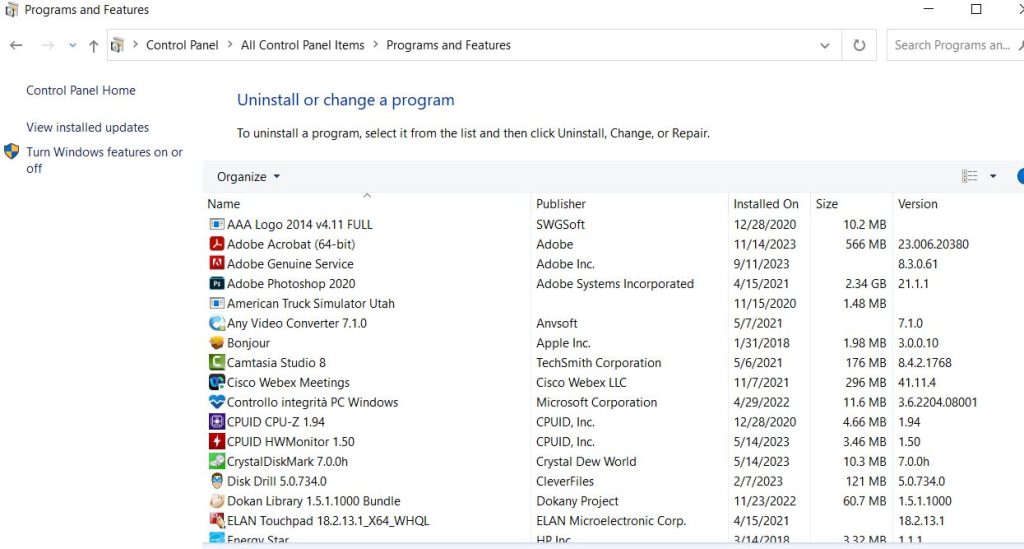
Uninstalling suspicious programs involves removing any software or applications from your computer that may be associated with Unixsearch.com or other malware.
These programs could have been installed unknowingly or bundled with other software.
- Go to the Control Panel on your computer.
- Open the “Programs and Features” or “Add or Remove Programs” section.
- Check for any strange or suspicious-seeming programs, as well as those that you may not have installed on purpose.
- Observe newly installed apps or ones whose names resemble well-known malicious software.
- Choose the dubious software from the inventory.
- Select the “Uninstall or remove” option for the software.
- Follow the on-screen directions to complete the uninstallation process.
- If you find any more suspicious apps on your system, follow these steps again.
- Restarting your computer will make the modifications take effect after you have removed any questionable apps.
By uninstalling suspicious programs from your computer, you can eliminate potential sources of malware infection and improve the overall security of your system.
4. Remove Unixsearch.com Extensions:
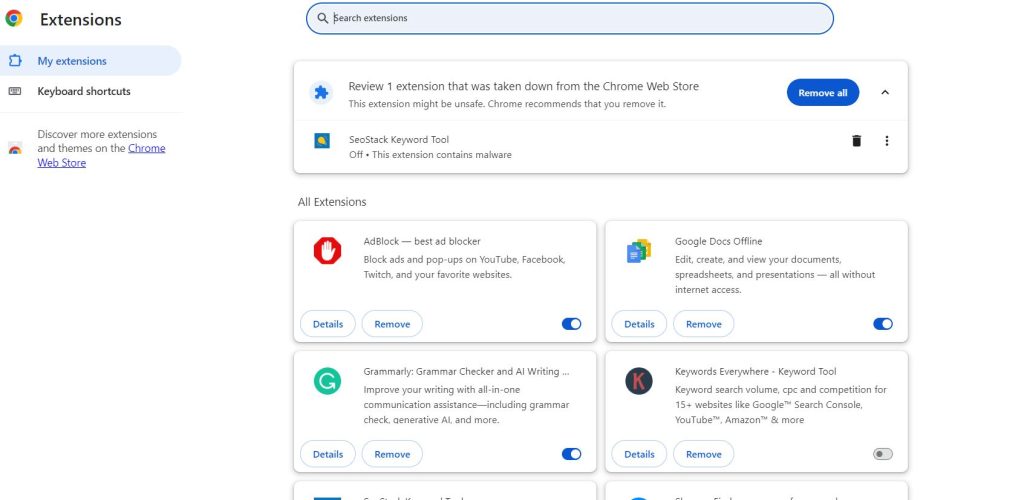
To take over your browser’s settings and manage your online activity, Unixsearch.com may install add-ons or extensions.
To get rid of Unixsearch.com’s annoying pop-ups, redirection, and other invasive activities, these extensions must be removed. The procedures to delete the Unixsearch.com extensions from several web browsers are listed below:
Google Chrome:
- Run the Google Chrome browser.
- In the upper-right corner of the browser window, click the three-dot menu symbol.
- From the dropdown menu, select “More tools” and then “Extensions.”
- A list of installed extensions will appear. Search for any Unixsearch.com-related or unknown extensions.
- To remove the extension, click the Remove button next to it.
- If requested, click “Remove” once again to confirm the removal in the pop-up dialog box.
- To take effect, restart Google Chrome.
Mozilla Firefox:
- Open Mozilla Firefox.
- Click on the menu button at the top of the browser window.
- Select “Add-ons” from the dropdown menu.
- Go to the “Extensions” tab.
- Look for any extensions related to Unixsearch.com or any unfamiliar ones.
- Click the three-dot menu next to the extension and select “Remove.”
- Confirm the removal by clicking “Remove” again if prompted.
- To implement the changes, restart Mozilla Firefox.
Microsoft Edge:
- Open Microsoft Edge.
- Click on the menu icon at the top of the browser window.
- Select “Extensions” from the dropdown menu.
- You’ll see a list of installed extensions. Look for any extensions related to Unixsearch.com or any unfamiliar ones.
- To choose the extension, click on it.
- Click the gear icon next to the extension and select “Remove.”
- Confirm the removal by clicking “Remove” again if prompted.
- To implement the changes, restart Microsoft Edge.
Internet Explorer:
- Open Internet Explorer.
- Click on Settings at the top of the browser window.
- Now choose “Manage add-ons”.
- Click on “Toolbars and Extensions”.
- Look for any extensions related to Unixsearch.com or any unfamiliar ones in the list of installed add-ons.
- Click on the extension that you wish to delete.
- Click the “Disable” button to deactivate the extension or the “Remove” button to uninstall it.
- Confirm the removal by clicking “Yes” if prompted.
- Repeat the process for any other suspicious extensions.
- Close the Manage Add-ons window.
- Restart Internet Explorer to implement the changes.
By following these steps, you can remove Unixsearch.com extensions from Internet Explorer and prevent them from hijacking your browser settings and interfering with your online activities.
5. Reset Browser Settings:
Installing browser extensions or add-ons is a common practice used by Unixsearch.com to take control of your internet activity and alter browser settings.
It’s imperative to remove these extensions in order to stop Unixsearch.com-related pop-ups, annoying redirection, and other invasive activities.
The procedures to delete the Unixsearch.com extensions from several web browsers are listed below:
Google Chrome:
- Open Google Chrome.
- Click on the menu at the top of the browser window.
- Select “More tools” from the dropdown menu, then choose “Extensions.”
- You will see a list of installed extensions. Look for any extensions related to Unixsearch.com or any unfamiliar ones.
- Click the Remove button next to the extension to uninstall it.
- Confirm the removal by clicking “Remove”.
- Now restart Google Chrome to implement the changes.
Mozilla Firefox:
- Open Mozilla Firefox.
- Click on the menu at the top of the browser window.
- Select “Add-ons” from the dropdown menu.
- Go to the “Extensions” tab.
- Look for any extensions related to Unixsearch.com or any unfamiliar ones.
- Click the three-dot menu next to the extension and select “Remove.”
- Confirm the removal by clicking “Remove” again if prompted.
- Now restart Mozilla Firefox to implement the changes.
Microsoft Edge:
- Open Microsoft Edge.
- Click on the menu at the top of the browser window.
- Select “Extensions” from the dropdown menu.
- You will see a list of installed extensions. Look for any extensions related to Unixsearch.com or any unfamiliar ones.
- Click on the extension you wish to remove it.
- Confirm the removal by clicking “Remove” again if prompted.
- Restart Microsoft Edge browser to implement the changes.
Internet Explorer:
- Open Internet Explorer.
- Click on the Settings in the top-right corner of the browser window.
- Choose “Manage add-ons”.
- Click on “Toolbars and Extensions”.
- Look for any extensions related to Unixsearch.com or any unfamiliar ones in the list of installed add-ons.
- Click on the extension that you wish to delete.
- Click the “Disable” button to deactivate the extension or the “Remove” button to uninstall it.
- Confirm the removal by clicking “Yes” if prompted.
By following these steps for each browser, you can effectively remove Unixsearch.com extensions and restore your browser to its default settings, thereby eliminating the unwanted behaviors associated with the malware.
Remove Using Antivirus Programs
1. Combo Cleaner:
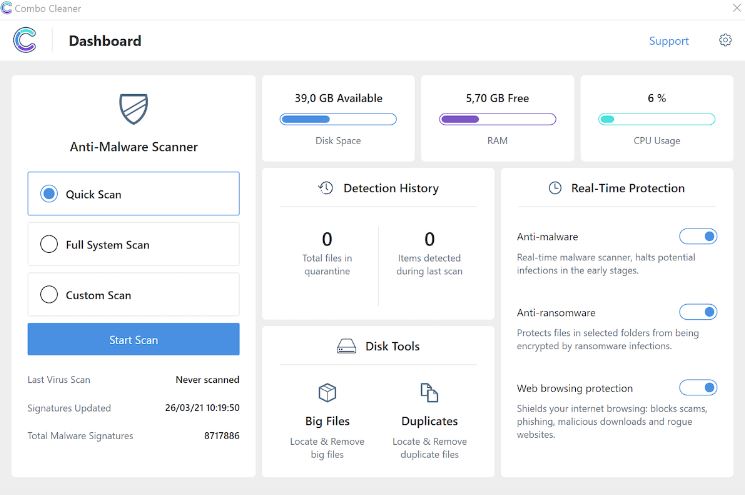
Overview:
Combo Cleaner is a feature-rich antivirus and system optimization utility. It has functions including disk cleansing, privacy scanning, duplicate file finding, and virus detection and removal.
Unixsearch.com and other viruses may be efficiently found and eliminated from your computer using Combo Cleaner.
Removal Process:
- Download and Install Combo Cleaner:
- Visit the official Combo Cleaner website to download the installer file.
- To install Combo Cleaner, follow the instructions displayed on the screen.
Launch Combo Cleaner and Update Definitions:
- Open Combo Cleaner from your Applications folder.
- Once opened, click on the “Antivirus” tab.
- Click on the “Start Combo Scan” button to initiate a scan of your system.
- Combo Cleaner will update its virus definitions before starting the scan to ensure it has the latest detection capabilities.
Perform a Full System Scan:
- Combo Cleaner will start scanning your system for malware, including Unixsearch.com, after updating definitions.
- Wait for the scan to complete. This may take some time depending on the size of your system and the number of files scanned.
Review Scan Results and Remove Threats:
- Once the scan is finished, Combo Cleaner will display a list of detected threats, including Unixsearch.com if present.
- Review the scan results and select Unixsearch.com and any other malware detected for removal.
- Click on the “Remove Selected Items” button to quarantine or remove the selected threats from your system.
Restart Your PC:
- After removing Unixsearch.com and other threats, restart your computer to apply the changes and ensure that your system is clean and secure.
2. AdwCleaner:
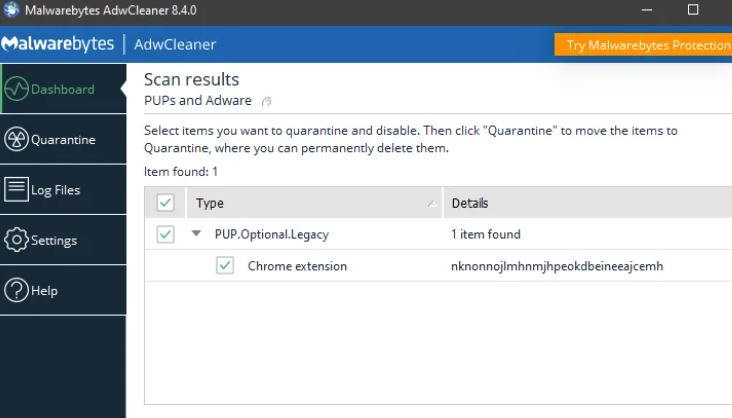
AdwCleaner is a free tool specialized in removing adware, unwanted toolbars, and unwanted programs (PUPs) from Windows computers. While targeting adware, AdwCleaner can also detect and remove browser hijackers like Unixsearch.com.
Removal Process:
- Download and Run AdwCleaner
- Visit the official AdwCleaner website to download the tool.
- If prompted by User Account Control, click “Yes” to allow AdwCleaner to make changes to your system.
Initiate Scan for Unixsearch.com:
- Once AdwCleaner is launched, click on the “Scan” button to start scanning your system for adware, PUPs, and browser hijackers like Unixsearch.com.
- AdwCleaner will search for malicious items in your files, folders, and registry entries.
Review Scan Results and Remove Threats:
- After the scan completes, AdwCleaner will display a list of detected threats, including Unixsearch.com if present.
- Review the scan results and select Unixsearch.com and any other unwanted items for removal.
- Click on the “Clean & Repair” button to quarantine or remove the selected threats from your system.
Restart Your Computer:
- Once the removal process is complete, AdwCleaner will prompt you to restart your computer.
- Restart your computer to apply the changes and ensure that Unixsearch.com and other threats have been removed.
3. SpyHunter:
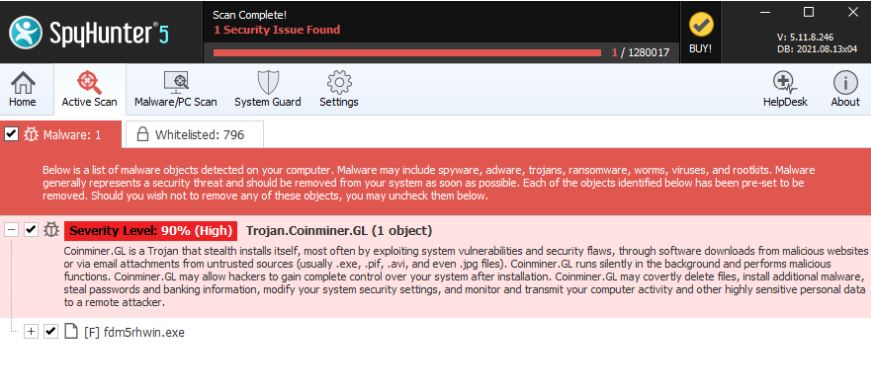
SpyHunter is a powerful anti-malware tool designed to detect and remove spyware, malware, and other malicious threats from Windows computers.
It offers real-time protection, custom malware fixes, and advanced scanning options to keep the system safe from online threats.
Removal Process:
- Download and Install SpyHunter
- Visit the official SpyHunter website to download the installer.
- Follow the on-screen instructions to install SpyHunter on your computer.
Launch SpyHunter and Update Definitions:
- Open SpyHunter from your desktop or the Start menu.
- Once opened, click on the “Start New Scan” button to initiate a scan of your system.
- SpyHunter will update its definitions before starting the scan to ensure it has the latest detection capabilities.
Perform a Full System Scan:
- After updating definitions, SpyHunter will start scanning your system for malware, including Unixsearch.com.
- Wait for the scan to complete. This may take some time depending on the size of your system and the number of files scanned.
Review Scan Results and Remove Threats:
- Once the scan is finished, SpyHunter will display a list of detected threats, including Unixsearch.com if present.
- Review the scan results and select Unixsearch.com and any other malware detected for removal.
- Click on the “Next” button to quarantine or remove the selected threats from your system.
Restart Your Computer:
- After removing Unixsearch.com and other threats, restart your computer to apply the changes and ensure that your system is clean and secure.
4. Malwarebytes:
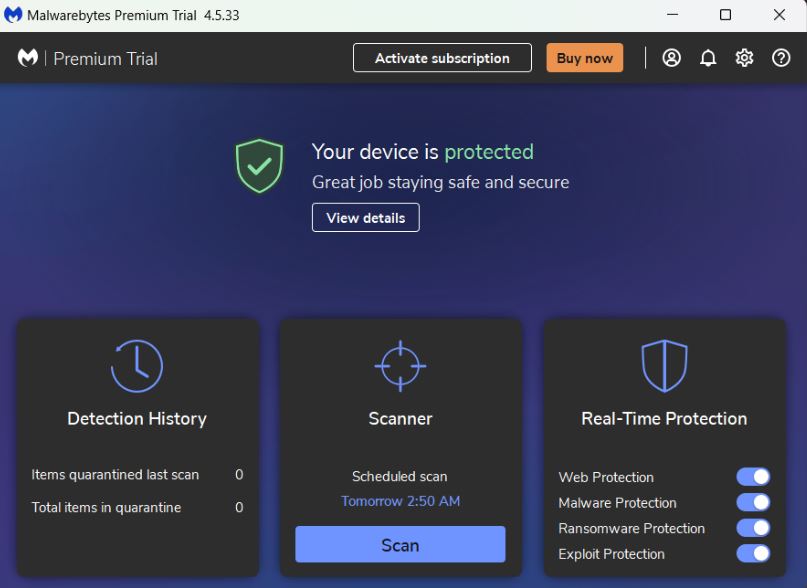
Malwarebytes is a leading anti-malware software known for its comprehensive malware detection and removal capabilities.
Removal Process:
- Download and Install Malwarebytes
- Visit the official Malwarebytes website to download the installer.
- To install Malwarebytes on your computer, follow the directions on the screen.
Launch Malwarebytes and Update Definitions:
- Open Malwarebytes from your desktop or the Start menu.
- Once opened, click on the “Scan” tab.
- Click on the “Start Scan” button to initiate a scan of your system.
Perform a Full System Scan:
- After updating definitions, Malwarebytes will scan your system for malware, including Unixsearch.com.
- Wait for the scan to complete. This may take some time depending on the size of your system and the number of files scanned.
Review Scan Results and Remove Threats:
- Once the scan is finished, Malwarebytes will display a list of detected threats, including Unixsearch.com if present.
- Review the scan results and select Unixsearch.com and any other malware detected for removal.
- Click on the “Quarantine” button to quarantine or remove the selected threats from your system.
Restart Your Computer:
- After removing Unixsearch.com and other threats, Malwarebytes may prompt you to restart your computer.
- Restart your computer to apply the changes and ensure that your system is clean and secure.
7. Delete Temporary Files and Clear Browser Cache:
Temporary files and browser cache can build up over time, occupying important disk space and containing malware remains like Unixsearch.com.
Your browser’s speed may be enhanced and any leftover malware can be removed by deleting these temporary files and cleaning the cache.
The instructions for clearing the browser cache and deleting temporary files in a variety of web browsers are included below.
Google Chrome:
- Open Google Chrome.
- Click at the top of browser window on the menu icon.
- Select “More tools” from the dropdown menu, then choose “Clear browsing data.”
- In the Clear browsing data window, select the time range for which you want to clear data (e.g., “All time” to clear all data).
- Click on the “Clear data” button to delete temporary files and clear the browser cache.
Mozilla Firefox:
- Open Mozilla Firefox.
- Click at the top of browser window on the menu icon.
- Now go to “Options” or “Preferences” from the menu.
- Choose the “Privacy & Security”.
- Scroll down to the “Cookies and Site Data” section.
- Click on the “Clear Data” button.
Microsoft Edge:
- Open Microsoft Edge.
- Click at the top of browser window on the menu icon.
- Select “Settings” from the dropdown menu.
- Scroll down and click on “Privacy, search, and services” in the left-hand menu.
- Under the “Clear browsing data” section, click on the “Choose what to clear” button.
- Click on the “Clear now” button to delete temporary files and clear the browser cache.
Internet Explorer:
- Open Internet Explorer.
- Click on the Settings in the top-right corner of the window.
- Select “Internet Options”.
- Go to the “General” tab.
- Under the “Browsing history” section, click on the “Delete” button.
- Check the box next to “Temporary Internet files and website files.”
- Click on the “Delete” button to delete temporary files and clear the browser cache.
Conclusion:
Finally, you now know how to remove completely the adware like Unisearch.com from your system. The Unixsearch.com changes the default search engine and homepage to a website that you probably don’t want. This usually happens when you download free software.
To prevent this, make sure to uncheck any boxes that offer to install toolbars or software that change your homepage and search engine.

It’s me Mosaab, the founder and leading author of MalwareYeti.com. Over the years, I have gained a lot of experience when it comes down to building or fixing computers. Throughout my journey, I’ve built gaming PCs, fixed irritating Windows errors, and removed sticky malware/viruses that have affected machines. You can learn more about me on our About us page.

